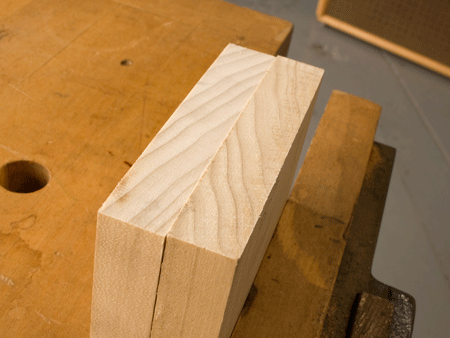 In the early 19th century everything was done by hand. From the engraver carving a family crest on a pocket watch to the seven year old assembling fusee chains for tuppence a day (or thereabouts). Woodworking, metalwork, it was all the same. Hand work, under various working conditions and repetition. Practice by the way really makes perfect and you can go faster. In the early 19th century everything was done by hand. From the engraver carving a family crest on a pocket watch to the seven year old assembling fusee chains for tuppence a day (or thereabouts). Woodworking, metalwork, it was all the same. Hand work, under various working conditions and repetition. Practice by the way really makes perfect and you can go faster.
Then along came machines and hand work was replaced by machine work. Where in the old days a machinist would have to hand scrape a valve facing to ensure accuracy in joining, now a surface grinder does that in a trice, with just a machine operator to run the machine. The skill isn't in the "doing" anymore, it's in the "figuring out how to do". This frees the "figuring out how to do it" guy to make stuff to very high repeatability and accuracy at the expense of some expensive tooling. And it means that the "doing it" person needs to have a lot of practice before they can do repeatable work, but they don't need to have all that expensive equipment.
And right now it occurred to me between the blogs of Konrad Sauer and Karl Holtey you can see both philosophies at work. Both guys do really, really wonderful work. Karl can set up his machines to produce planes that are so exact in dimension that he can pin them together. Konrad on the other hand can do all sorts of custom designs and tweaks because there is no tooling and setup time to worry about.
Karl needs a shop full of expensive equipment, Konrad needs time and practice. Karl can run a batch of identical planes extremely efficiently to an incredible level of repeatability. But customization means new expensive tooling.
Each plane in Konrad's shop is slightly and unintentionally different, and he has to custom fit each part to every plane, but special orders are easy to deal with efficiently.
Which approach is better? Well I think both guys do great work and both of them found a work method that works for them. So that's not the issue.
Why is all this important? because modern amateur woodworking has very distinct slant in the machine approach. Your average woodworker who wants to do something just buys a machine and it's done. There isn't much call for basic skills. The goal is to produce something. Folks like me are more interested in learning the hand skills, just like people want to learn how to play the guitar.
Both approaches are perfectly valid. I can list the advantages to both but it would take hours. The trick I think is not getting buttonholed. And every once in awhile someone reminds me that finishing projects is also important and good power tools can help you do that, and compensate for lack of professional speed and 18th century hand skills.
So if you use machines a lot - try taking the time to learn classic hand skills - you might find it relaxing and more productive than limiting yourself to what your machines can do. Relish the freedom not having to do only what the machine lets you do. Work to fit, making pieces as you go.
If you use hand tools for everything, remember that certain tasks a machine can do faster and better, and there is no reason to get discouraged if you find that certain hand operations are beyond your current level of skill to do efficiently but can easily be done by machine.
It all comes out the same. In the picture above one piece of wood was cut by hand and shot on a shooting board (using a dullish Bedrock 604), the other was cut using a Festool Kapex chopsaw. I needed a bunch of pieces for another blog entry I am working on, time is short, and I was glad I had the machines available.
|
 Joel's Blog
Joel's Blog Built-It Blog
Built-It Blog Video Roundup
Video Roundup Classes & Events
Classes & Events Work Magazine
Work Magazine






















 In the early 19th century everything was done by hand. From the engraver carving a family crest on a pocket watch to the seven year old assembling fusee chains for tuppence a day (or thereabouts). Woodworking, metalwork, it was all the same. Hand work, under various working conditions and repetition. Practice by the way really makes perfect and you can go faster.
In the early 19th century everything was done by hand. From the engraver carving a family crest on a pocket watch to the seven year old assembling fusee chains for tuppence a day (or thereabouts). Woodworking, metalwork, it was all the same. Hand work, under various working conditions and repetition. Practice by the way really makes perfect and you can go faster.
This is reminiscent of David Pye's workmanship of certainty and workmanship of risk concepts. I agree with you, I would not want to restrict my methods to either machines only or hand tools only.
For example, the Festool must surely be able to quickly produce lots of those nice cutoffs, and that's good. But to remove .002" from one of them if needed to achieve a perfect fit, shooting is the answer.
Rob Porcaro